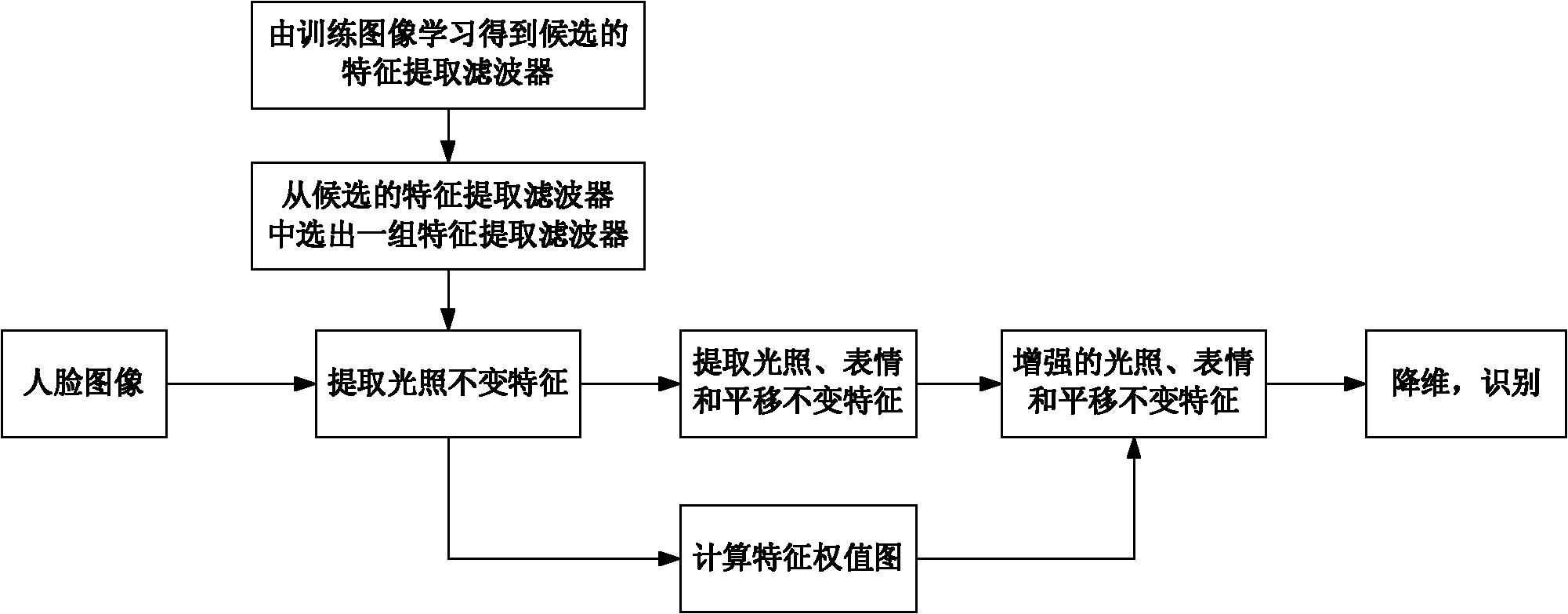Method for extracting face feature by simulating biological vision mechanism
A face feature and biological vision technology, applied in the field of image feature extraction for face recognition, can solve problems such as difficult to achieve real-time processing, large amount of calculation for 3D modeling, and high computational complexity, so as to meet real-time processing requirements and improve recognition The effect of rate and good descriptive ability
- Summary
- Abstract
- Description
- Claims
- Application Information
AI Technical Summary
Problems solved by technology
Method used
Image
Examples
Embodiment 1
[0023] figure 1 The processing flow of this embodiment is given, which includes the following 6 steps:
[0024] (1) Use the sparse coding model to simulate the learning mechanism of simple cells in the primary visual cortex, and obtain a set of sparse coding basis functions consistent with the statistical characteristics of the image as candidate feature extraction filters. The sparse coding model describes the learning mechanism of simple cells as an optimization problem:
[0025] min : E ( a , φ ) = Σ x , y [ I ( x , y ) - Σ i = 1 N ...
Embodiment 2
[0041] This example is basically the same as the first example, the difference is that the process of enhancing the features through the attention mechanism in step (5) is omitted, so as to improve the speed of feature extraction. In the implementation steps of this example, the feature map C with illumination, expression and translation invariance is obtained in step (4) i (x, y), i=1, 2, L, M, directly put each C i (x, y) are normalized to zero mean and unit variance, and each normalized C i (x, y) are spliced into a column vector by column, and then the M column vectors are spliced into a large column vector as the invariant feature vector of the face image, and the subsequent processing is implemented according to step (6) in Example 1 .
[0042] Computer simulation analysis of the inventive method:
[0043] Use Matlab software on a computer with P4 2.66GHz CPU and 1GB internal memory to carry out simulation analysis on the method of embodiment 1 and 2, the Gabor wa...
PUM
 Login to View More
Login to View More Abstract
Description
Claims
Application Information
 Login to View More
Login to View More - R&D
- Intellectual Property
- Life Sciences
- Materials
- Tech Scout
- Unparalleled Data Quality
- Higher Quality Content
- 60% Fewer Hallucinations
Browse by: Latest US Patents, China's latest patents, Technical Efficacy Thesaurus, Application Domain, Technology Topic, Popular Technical Reports.
© 2025 PatSnap. All rights reserved.Legal|Privacy policy|Modern Slavery Act Transparency Statement|Sitemap|About US| Contact US: help@patsnap.com



